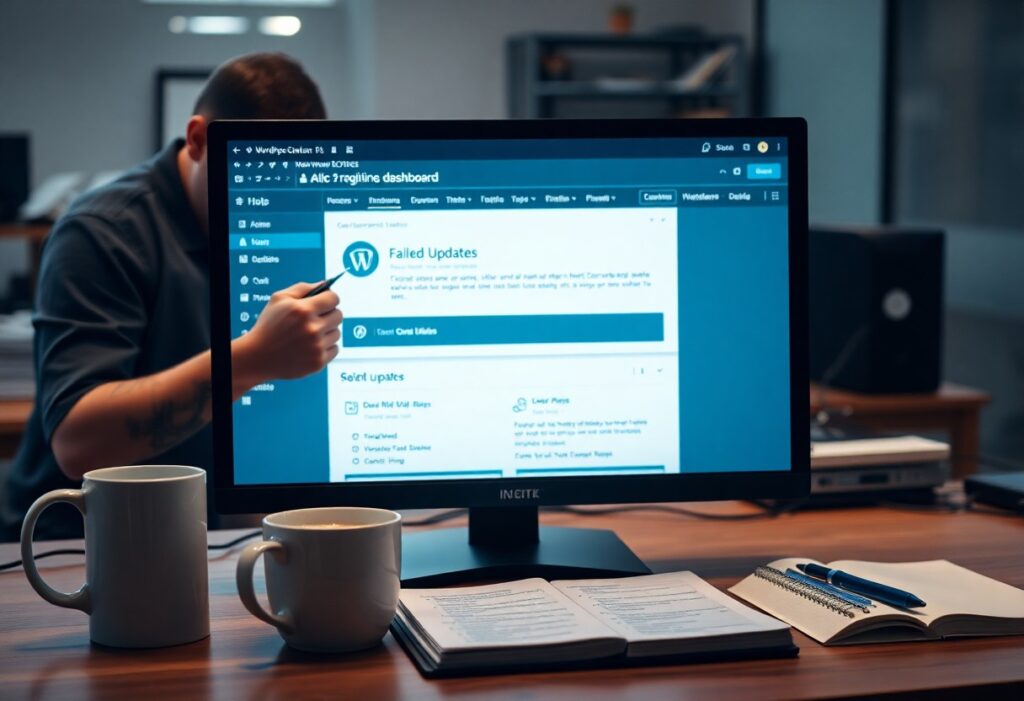Unveiling the Common Culprits of Slow Elementor Performance
Heavy Media Files
Your website’s loading speed may drastically slow down due to large images or videos. For example, high-resolution images that exceed 1MB can take a significant amount of time to load, resulting in a frustrating user experience. Compressing images with tools like Smush or Imagify can make a noticeable difference without sacrificing quality. Aim for images that are optimized for the web, ideally around 100-300KB, to ensure fast loading times while maintaining visual appeal.
Excessive Use of Plugins
Every plugin you add introduces additional scripts and styles that can burden your site. If you’re running a minimal setup but still experiencing slowness, excessive plugins could be the hidden culprit. As a rule of thumb, try to limit the number of active plugins to around 20, and deactivate or replace those that may not serve a specific purpose. For instance, replacing multiple social sharing plugins with a more streamlined solution can help lighten the load on your Elementor page.
The Art of Diagnostic Techniques
Leveraging Browser Developer Tools for Insight
Browser Developer Tools provide an invaluable resource for identifying performance bottlenecks within your Elementor website. By accessing these tools—usually under the ‘Inspect’ option in your browser—you can monitor network activity, view console errors, and analyze loading times. Focus on the Network tab, where you’ll find a waterfall chart displaying the loading sequence of all site resources. This visualization helps pinpoint which elements are dragging down your performance, allowing you to target specific images, scripts, or styles for optimization.
In addition to the Network tab, the Performance tab can yield further insights. Conducting a performance audit can uncover JavaScript issues, excessive reflows, and other render-blocking resources. As you experiment with changes, you can replay previous sessions to compare performance metrics before and after your adjustments, providing clear data on what works and what doesn’t in real time.
Utilizing Speed Testing Tools Effectively
Speed testing tools are fantastic for benchmarking your Elementor website’s performance against industry standards. Tools like Google PageSpeed Insights, GTmetrix, and Pingdom provide comprehensive reports that not only score your site’s speed but also offer actionable recommendations. By understanding the scored metrics, you can prioritize which optimizations will have the greatest impact on your site’s loading time. For instance, if your score highlights issues with large image sizes, addressing those will likely lead to notable performance improvements.
Choosing the right tools is vital; many provide different metrics and areas of focus. Google PageSpeed Insights emphasizes mobile-friendliness and overall user experience, while GTmetrix breaks down specific elements like total page size and the number of requests. By using a combination of these tools, you can create a well-rounded strategy to enhance your site’s performance.
The analysis from these tools often leads to practical steps, such as enabling compression, properly sizing images, and eliminating render-blocking resources. Making these adjustments significantly enhances user experience, reduces bounce rates, and can contribute to higher search engine rankings. Utilize the reports generated by these tools regularly to track the progress of your optimizations and ensure that your site remains highly performant over time.
Optimizing Frontend Loading Speed
Compressing Images and Media Assets
One of the most effective ways to enhance your website’s loading speed is by compressing images and other media assets. High-resolution images can drastically increase loading times, making your site feel sluggish. Use tools like TinyPNG or ImageOptim to reduce the file sizes of your images without compromising quality. Additionally, consider the format; using WebP format instead of traditional JPEG or PNG can significantly reduce load times while maintaining crisp visuals. Ultimately, keeping your media files optimized helps in faster rendering, improving your overall site performance.
Videos can also contribute to slow loading speeds, especially if they are self-hosted. Instead of directly embedding large video files, embed from trusted platforms like YouTube or Vimeo. These services automatically optimize the playback quality based on the user’s connection speed, enhancing the user experience while ensuring your site remains agile.
Minimizing HTTP Requests and Reducing Bloat
A reduced number of HTTP requests is necessary for improving your site’s loading speed. Each element, including scripts, stylesheets, and images, requires its own request to the server. To cut down on HTTP requests, consider consolidating multiple CSS and JavaScript files into a single file whenever possible. This minimizes the amount of communication your site needs to have with the server, leading to improved loading speeds. Additionally, use tools such as Autoptimize or W3 Total Cache to efficiently merge files and optimize them for performance.
Another aspect to consider is cleaning up unused plugins and themes. Many plugins can add unnecessary weight to your site, contributing to bloat that affects loading speed. By actively managing the plugins installed on your site and opting for lightweight alternatives, you can reduce HTTP requests significantly, ensuring a more streamlined experience for your visitors.
Making smart choices regarding HTTP requests doesn’t just speed up loading time; it also improves the overall user experience, leading to lower bounce rates. For instance, combining stylesheets and JavaScript files can lead to a speed gain of up to 40%, proving that small adjustments can have a significant impact.
Database and Backend Solutions to Enhance Performance
Cleaning and Optimizing the Database
Regularly cleaning and optimizing your database can yield significant performance gains for your Elementor website. Over time, your database accumulates unnecessary data, such as post revisions, spam comments, and orphaned metadata. These extraneous entries bloat your database, leading to slower query responses and overall sluggishness. Implementing a plugin like WP-Optimize or WP-Sweep allows you to easily clear out this clutter without needing advanced technical knowledge. Scheduling regular maintenance activities ensures your database stays lean and efficient, directly impacting your site’s speed.
Beyond just clearing debris, optimization also involves using the right database configuration. Taking advantage of indexing and optimizing your database tables can dramatically reduce retrieval times. For instance, you might consider using a dedicated database maintenance tool that can automatically repair and optimize tables. Investing time in understanding and configuring these settings, even if just a little bit, can lead to more efficient queries and quicker load times, providing a smoother experience for your visitors.
Leveraging Caching Solutions
Caching is an effective strategy for enhancing the speed of your Elementor website by storing copies of your site’s pages. This allows subsequent requests to serve content from a cached version instead of retrieving it from the database each time. Implementing a caching plugin, like W3 Total Cache or WP Super Cache, ensures that static resources are delivered swiftly to users. These plugins can handle page caching, browser caching, and even object caching, freeing up server resources for other tasks.
Utilizing object caching specifically can drastically reduce database load times, as it allows frequently accessed data to remain stored in-memory. This is particularly useful for dynamic websites where database interactions are common. By leveraging caching strategies effectively, you can make your site considerably faster without compromising on the functionality that Elementor provides, ultimately enhancing user experience and potentially boosting conversions.
Assembling a High-Performance Hosting Environment
Choosing the Right Hosting Plan for Elementor
Selecting an appropriate hosting plan is foundational to the performance of your Elementor website. Opt for a plan that offers high-speed features like SSD storage and a solid-state drive (SSD) for quicker data retrieval. You’ll find that managed WordPress hosting services, such as WP Engine or SiteGround, often come equipped with server configurations specifically optimized for WordPress installations, which cater excellently to the needs of Elementor. These specialized plans often also provide automatic updates and built-in caching, contributing to an accelerated user experience.
Assessing your site’s traffic is equally vital. If you’re expecting high traffic, a VPS or dedicated hosting plan will manage this demand far better than shared hosting. With shared plans, multiple websites compete for resources, causing site slowdowns. Investing in the right hosting plan sets a strong foundation for the performance layer of your Elementor site, ensuring it can handle your specific demands without compromise.
Configuring Server Settings for Optimal Speed
Server settings can dramatically influence your site’s speed. Ensure your PHP version is at least 7.4 or higher, as newer versions offer significant performance improvements in script execution time. Enabling opcode caching with solutions like OPcache can also reduce loading times, as it allows PHP to execute faster by storing precompiled script bytecode in memory. Configure your server to use Gzip compression, which minimizes file sizes sent to users, vastly improving load times.
Furthermore, using a Content Delivery Network (CDN) can substantially enhance speed by distributing your content across multiple geographical locations. This ensures that visitors load your website from the nearest server, significantly reducing latency. By meticulously adjusting these server settings, you create a streamlined environment, allowing your Elementor website to function optimally.
Navigating Plugin Conflicts and Their Resolution
Identifying Resource-Heavy Plugins
Resource-heavy plugins can significantly hinder your website’s performance. Start by performing a plugin audit to list all active plugins and assess their impact on load times. Tools like Query Monitor or P3 (Plugin Performance Profiler) can help you pinpoint which plugins are consuming the most resources. Often, plugins related to caching, security, or those that add a lot of external scripts can slow down your website, especially if they are not well-optimized. For instance, a commonly used plugin may not be the best option if it’s adding several calls to external APIs or scripts that are slowing down your page rendering.
Keep an eye out for plugins that might conflict with Elementor’s functionality. For example, certain caching plugins may conflict with Elementor’s dynamic loading features, causing slower load times. Testing plugins in isolation can help you identify the culprits, as deactivating one at a time and measuring performance impacts will elucidate the situation effectively. Be prepared to look beyond just the plugin title and examine what features you really need versus unnecessary functionalities that could be offloaded to more efficient alternatives.
Strategies for Effective Plugin Management
Effective plugin management hinges on choosing quality over quantity. Start by only installing crucial plugins that deliver value specific to your needs. Each additional plugin increases the likelihood of conflicts and additional load times. You can also look for multi-functional plugins that consolidate various features into one package, thereby reducing the total number of plugins you need to run. For example, instead of using separate plugins for SEO, analytics, and social sharing, try to find an all-in-one solution that encompasses multiple functionalities.
Regularly reviewing your active plugins is fundamental to maintaining an optimized website. You should not only deactivate plugins that you no longer use but also check for updates regularly to ensure all functionalities are running smoothly. Prioritizing compatibility with your version of Elementor can prevent potential performance pitfalls. Staying informed about the latest best practices for the plugins you use can further smooth out potential integration hurdles that may arise.
Additionally, using well-maintained and frequently updated plugins from reputable developers can significantly enhance your website’s reliability. Take time to check user reviews and update release notes to gauge a plugin’s performance and support. Setting a reminder to review your plugin list every few months can help keep your website lean and performing optimally, warding off any slowdowns that could creep in unnoticed.
Conclusion
The process of troubleshooting and fixing slow Elementor websites can seem daunting, but by implementing the strategies discussed in this guide, you can significantly enhance your site’s performance. Start by assessing your hosting environment, optimizing images, and minimizing plugin usage. Utilizing caching solutions and enabling lazy loading can also provide quick fixes that lead to noticeable improvements. As you go through each step, monitor your site’s speed and performance metrics to ensure you’re making progress.
Your website is an necessary part of your online presence, and a well-optimized Elementor site can improve user experience and boost search engine rankings. By taking the time to address the issues causing slow loading times, you can create a more engaging platform for your visitors. With persistence and careful analysis, you’ll find that boosting your Elementor website’s performance is not just achievable but also highly rewarding.
Q: What are the common reasons for a slow Elementor website?
A: There are several reasons why an Elementor website may perform slowly. Some common factors include unoptimized images, too many plugins, outdated themes or plugins, server issues, and heavy scripts or CSS files. Additionally, excessive use of animations and high-resolution videos can contribute to slower load times. It is crucial to assess each element of your website to identify possible bottlenecks.
Q: How can I optimize images on my Elementor website to improve speed?
A: To optimize images, start by compressing them using tools like TinyPNG or ImageOptim before uploading. Additionally, ensure that you are using the correct file formats; for example, JPEG for photos and PNG for graphics with transparency. You can also use plugins such as Smush or ShortPixel to automatically optimize images on upload. Implementing lazy loading can further enhance performance by only loading images when they are in the viewport.
Q: What steps can I take to reduce the number of plugins on my Elementor site?
A: To reduce the number of plugins, begin by auditing the installed plugins. Deactivate and delete any that are not crucial to your website’s functionality. Consider combining functionalities; for instance, if you have multiple plugins for SEO, caching, or security, choose one that effectively covers all necessary features. Lastly, always look for lightweight alternatives or built-in features within Elementor or your theme to minimize reliance on plugins.



